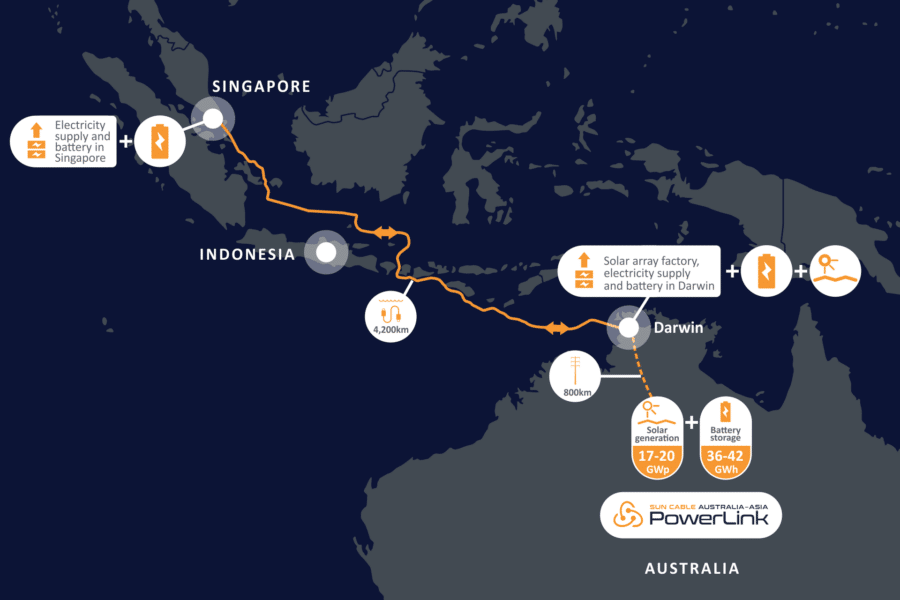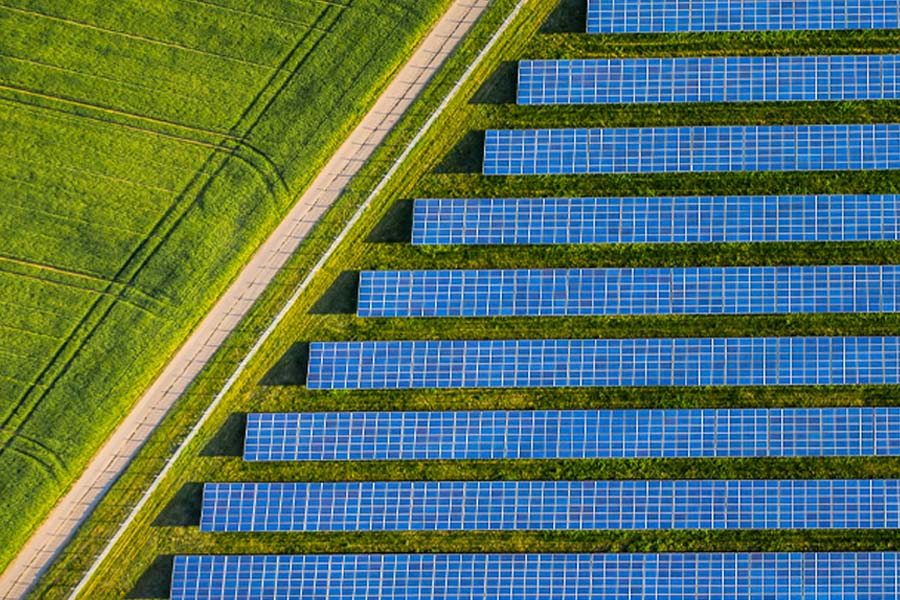Solar precinct render by Sun Cable
The trade partnership between Australia and Asia has a strong history. It began with establishing trade discussions in 1945, later leading to Japan becoming Australia’s leading merchandise export destination in 1966-67, only to be taken over by China in 2014. Another key milestone was the Association of Southeast Asian Nations (ASEAN) partnership in 1974.
This relationship was further cemented in 2014 when Australia formally became a strategic ASEAN partner, working with the other nations to build mutual security and prosperity and address important regional challenges.
One of the biggest of these challenges is climate change.
According to the UN Intergovernmental Panel on Climate Change (IPCC), Southeast Asia is one of the world’s most at-risk regions. Flash floods, forest fires, landslides and cyclones—along with the resulting economic, environmental and social harm—are already becoming more frequent and severe throughout the region.
To meet this threat, many Southeast Asian countries are looking for renewable energy sources and infrastructure and implementing ‘green growth plans.’
Australia has the highest wind and solar capacity of any country outside of Europe (804 watts per person) and the second-largest solar resource per person in the world (644 watts per person). Due to Australia’s resources, large-scale exports of renewable energy present a rare chance to meet local energy needs and maintain economic growth. Through the ASEAN partnership, Australia has two projects underway to bring renewable energy to Southeast Asia.
Asian Renewable Energy Hub
The Asian Renewable Energy Hub (AREH), located on 6,500 square kilometres in Western Australia’s Pilbara area, is the most advanced green hydrogen project at scale and has the potential to be one of the biggest renewable energy hubs in the world. It includes 26GW of upstream wind and solar power and has the capacity to produce up to 10 million tonnes of green ammonia annually and about 1.8 million tonnes of green hydrogen annually.
A large-scale hybrid renewable energy facility would be built in stages as part of this project to enable the export of hydrogen derivatives (such as ammonia) and for local usage in the Pilbara region (e.g., to enable large-scale mine electrification, replacement of diesel fuels with hydrogen, bunkering of ammonia shipping fuels, etc.).
AREH seeks to significantly contribute to the energy transition in Australia and the larger Asia Pacific region. It will also contribute to long-term renewable energy security in the Asia Pacific region by assisting nations like South Korea and Japan in their efforts to decarbonize.
At full capacity, the project aims to:
- Create approximately 90 terawatt hours of electricity annually—or over a third of all the electricity produced in Australia in 2020—with a combined solar and wind power generating capacity of up to 26 GW.
- Generate approximately 9 million tonnes of green ammonia or 1.6 million tonnes of hydrogen annually.
- Save 17 million tonnes of carbon each year in local and export markets, which over the course of the project would save about 0.5 gigatonnes (Gt) of carbon.
Australia-Asia Powerlink project
In contrast to Singapore, which is constrained for space and is aiming to switch to renewable energy, Australia’s Northern Territory has plenty of sun and room. One of the biggest and most complex renewable energy projects ever conceived may soon connect the two.
The Indo-Pacific region is undergoing a massive energy shift, and the proportion of energy delivered by electricity is increasing significantly. Energy demand in Southeast Asia is expected to increase by 60% by 2040, expanding at an average rate of 6% annually. Due to its low cost, demand for renewable electricity is rising.
The Australia-Asia Powerlink project will see high-voltage undersea cables transport Australian sunshine more than 5,000 km (3,100) miles to Singapore as part of a massive US$22 billion infrastructure project. It will be the largest solar farm and battery storage system in history when it opens in 2027.
The massive Powell Creek Solar Precinct will be built on 12,000 hectares (29,650 acres) of desolate territory around 800 kilometres (500 miles) south of Darwin as part of the Australia-Asia Powerlink project, which is headed by Australia’s Sun Cable. The location was chosen because it is one of the areas with the greatest amount of constant sunshine on Earth.
With a battery that can store up to 42 gigawatt hours of electricity, the $30 billion project seeks to provide up to 20 gigawatts of peak electricity from what the business describes as the largest solar electricity generating facility in the world.
To transport the power from Australia to Singapore, it will first go through overhead cables to the northern coast before travelling along 4,200 km (2,600 miles) of high-voltage DC undersea cable and cutting a dogleg around some of Indonesia’s tricky islands on its way to Singapore.

At full capacity, the project will.
- Power up to 3 million homes and account for up to 15% of Singapore’s electrical needs.
- Reduce 11.5 million tonnes of CO2 emissions—equivalent to taking 2.5 million automobiles off the road.












